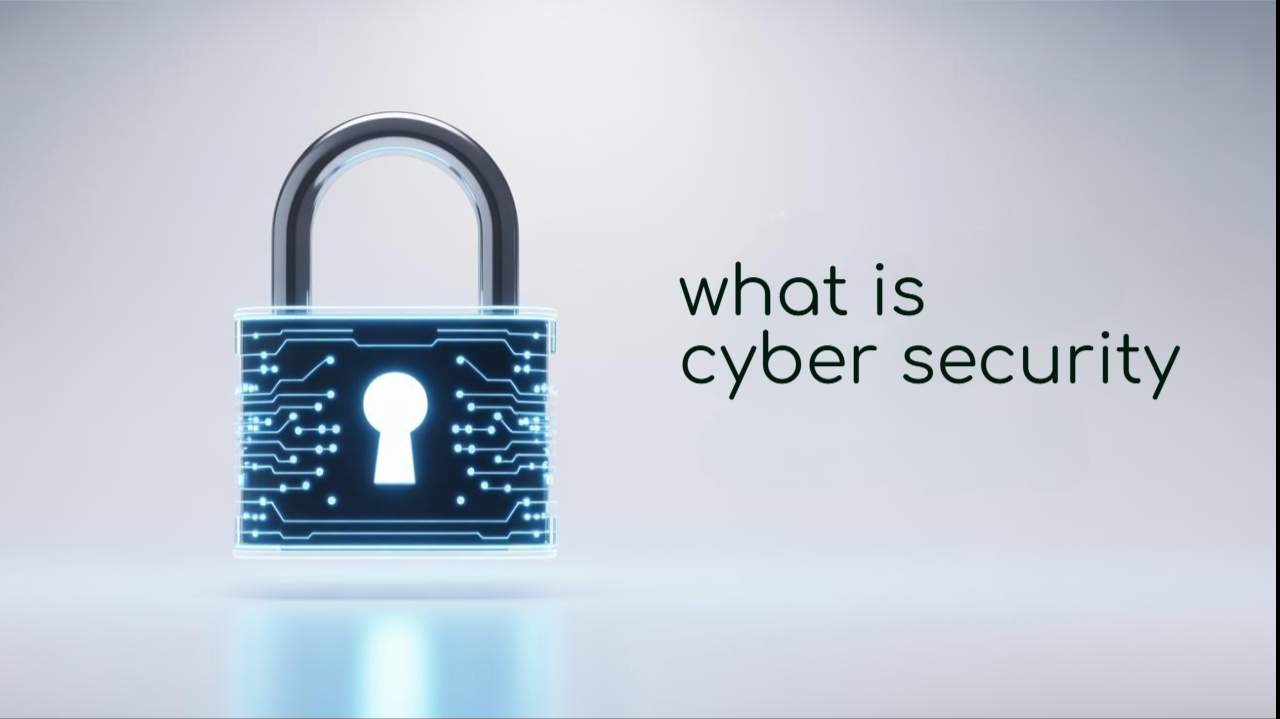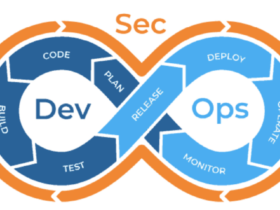In today’s interconnected world, where our lives increasingly exist online, from banking and communication to healthcare and entertainment, the question of “what is cybersecurity?” has become more pertinent than ever. At its core, cybersecurity refers to the practices, technologies, and processes designed to protect computer systems, networks, programs, and data from digital attacks, damage, or unauthorized access. It’s the critical discipline that ensures the confidentiality, integrity, and availability of information in the vast digital realm, acting as a crucial shield against a constantly evolving landscape of threats.
The Foundation: Confidentiality, Integrity, and Availability (CIA Triad)
Understanding what is cybersecurity often begins with its fundamental principles, famously known as the CIA Triad:
- Confidentiality : This principle ensures that sensitive information is accessible only to authorized individuals. It involves preventing unauthorized disclosure of data, whether it’s personal identifiable information (PII), financial records, or classified government documents. Measures like encryption, access controls (usernames, passwords, multi-factor authentication), and data masking contribute to confidentiality.
- Integrity : Integrity guarantees that data remains accurate, consistent, and trustworthy throughout its lifecycle. It means preventing unauthorized modification or alteration of data. Technologies like digital signatures, hashing, and robust version control systems help maintain data integrity.
- Availability : This principle ensures that authorized users can reliably access information and systems when needed. It involves maintaining functional hardware, software, and networks to prevent disruption of services. Measures like redundant systems, disaster recovery plans, and protection against Denial-of-Service (DoS) attacks are crucial for availability.
These three pillars form the bedrock of any effective cybersecurity strategy, guiding the development and implementation of security measures.
Common Types of Cyber Threats
To truly grasp what is cybersecurity, one must understand the adversaries it protects against. Cyber threats are diverse and constantly evolving, aiming to exploit vulnerabilities in systems, networks, and human behavior. Some of the most prevalent types include:
- Malware : A broad term for malicious software, including viruses, worms, Trojan horses, spyware, and adware. Malware aims to damage, disrupt, or gain unauthorized access to computer systems.
- Ransomware : A particularly disruptive type of malware that encrypts a victim’s files, rendering them inaccessible, and demands a ransom (usually in cryptocurrency) for their release.
- Phishing and Social Engineering : These attacks manipulate individuals into revealing sensitive information (e.g., login credentials, financial details) or performing actions (e.g., clicking a malicious link) through deceptive tactics, often via fake emails, messages, or websites.
- Denial-of-Service (DoS) and Distributed Denial-of-Service (DDoS) Attacks : These attacks overwhelm a system, server, or network with a flood of traffic, making it unavailable to legitimate users. DDoS attacks use multiple compromised systems to launch the attack.
- Man-in-the-Middle (MitM) Attacks : In this attack, a malicious actor intercepts and relays communications between two parties who believe they are communicating directly, allowing the attacker to eavesdrop or alter the conversation.
- SQL Injection : A type of attack that exploits vulnerabilities in web applications to insert malicious SQL code into database queries, potentially allowing attackers to access, modify, or delete data.
- Zero-Day Exploits : Attacks that target newly discovered software vulnerabilities for which no patch or fix is yet available, making them particularly dangerous.
Understanding these threats is crucial for developing proactive defense strategies. For a more comprehensive list and detailed explanations of cyber threats, the Cybersecurity and Infrastructure Security Agency (CISA) provides excellent resources.
Key Components of Cybersecurity
Cybersecurity is not a single product or solution; it’s a multi-layered approach involving various components working in concert. These typically include:
- Network Security : Protecting the computer networks from unauthorized access, misuse, or disruption. This involves firewalls, intrusion detection/prevention systems (IDS/IPS), virtual private networks (VPNs), and network segmentation.
- Application Security : Ensuring that software applications are secure from design and development through deployment and maintenance. This involves secure coding practices, vulnerability testing, and regular updates.
- Endpoint Security : Protecting individual devices (endpoints) such as laptops, desktops, smartphones, and servers from threats. This includes antivirus software, endpoint detection and response (EDR) solutions, and device management.
- Data Security : Implementing measures to protect data both at rest (stored) and in transit (moving across networks). This involves encryption, access controls, data loss prevention (DLP) tools, and data backups.
- Identity and Access Management (IAM) : Managing and controlling who has access to what resources and verifying user identities. This includes strong authentication methods (like multi-factor authentication – MFA) and privilege management.
- Cloud Security : Protecting data, applications, and infrastructure in cloud computing environments. This involves secure cloud configurations, cloud access security brokers (CASBs), and compliance with cloud security standards.
- Operational Security (OpsSec) : The processes and decisions for handling and protecting data assets. This includes incident response plans, security awareness training for employees, and ongoing monitoring.
- Security Information and Event Management (SIEM) : Systems that collect, analyze, and present security-related data from various sources across an organization’s IT infrastructure, enabling real-time threat detection and incident response.
Why Cybersecurity is Crucial for Everyone
The importance of what is cybersecurity extends far beyond large corporations or government agencies; it is vital for individuals and small businesses alike.
For Individuals :
- Protecting Personal Data: Safeguarding your identity, financial information, photos, and private communications from theft or misuse.
- Preventing Financial Fraud: Protecting your bank accounts, credit cards, and online transactions from unauthorized access and fraudulent activities.
- Maintaining Digital Privacy: Ensuring your online activities and personal information remain private and are not exploited by third parties.
- Device Protection: Keeping your computers, smartphones, and smart home devices free from malware and unauthorized control.
For Businesses:
- Business Continuity: Preventing costly downtime and operational disruption caused by cyberattacks.
- Data Protection: Safeguarding sensitive customer data, intellectual property, and proprietary business information.
- Reputation Management: Maintaining customer trust and avoiding reputational damage that can result from data breaches.
- Regulatory Compliance: Adhering to data protection laws and industry standards (e.g., GDPR, HIPAA, PCI DSS) to avoid hefty fines and legal repercussions.
- Financial Stability: Mitigating financial losses from theft, extortion (ransomware), and the costs associated with incident response and recovery.
The average cost of a data breach continues to rise, making robust cybersecurity an investment, not an expense. For more insights into the benefits of strong cybersecurity for businesses, refer to resources from industry leaders like DataGuard’s blog on the advantages of cybersecurity.
Best Practices for Digital Safety
Knowing what is cybersecurity also means understanding how to practice good cyber hygiene. Here are some essential best practices for individuals and organizations:
- Use Strong, Unique Passwords and Multi-Factor Authentication (MFA): Create complex, long passwords (or passphrases) for each online account and enable MFA wherever possible to add an extra layer of security.
- Keep Software Updated: Regularly update operating systems, applications, and antivirus software. Updates often include critical security patches that fix known vulnerabilities.
- Be Wary of Phishing Attempts: Think before you click. Be suspicious of unsolicited emails, messages, or calls asking for personal information or directing you to suspicious links.
- Backup Your Data: Regularly back up important files to an external drive or cloud service to ensure you can recover them in case of data loss due to an attack or system failure.
- Use a Reputable Antivirus/Antimalware Solution: Install and maintain trusted security software on all your devices.
- Secure Your Wi-Fi Network: Use a strong password for your home Wi-Fi and ensure it uses WPA2/WPA3 encryption. Avoid public Wi-Fi for sensitive activities.
- Educate Yourself and Your Employees: Continuous learning about emerging threats and security best practices is essential for everyone.
In essence, what is cybersecurity is the collective effort to protect our increasingly digital lives and assets from an ever-growing array of online threats. It encompasses a broad range of technologies, processes, and human vigilance, all working together to ensure the confidentiality, integrity, and availability of information. As our reliance on technology grows, so too does the importance of cybersecurity. By understanding its core principles, recognizing common threats, and adopting best practices, individuals and organizations can build a more secure digital future.
Want to learn more about protecting yourself and your business in the digital world? Explore our in-depth guides and articles on cybersecurity trends and solutions at JURNALIN.










اترك رد